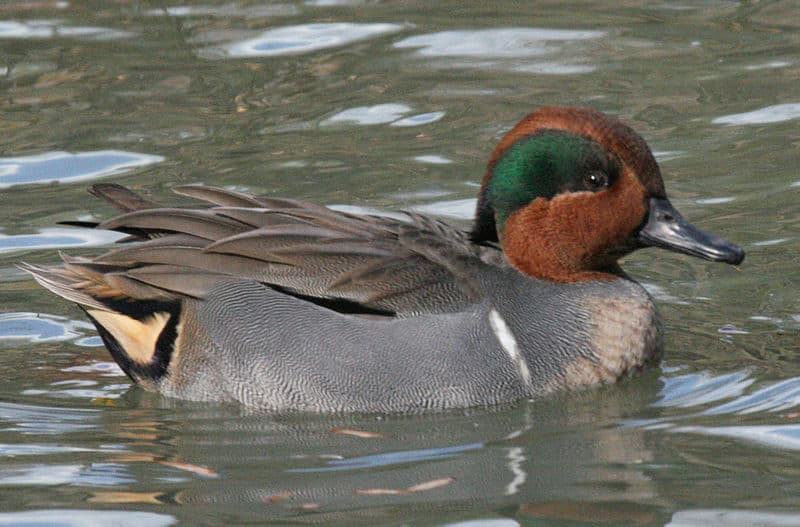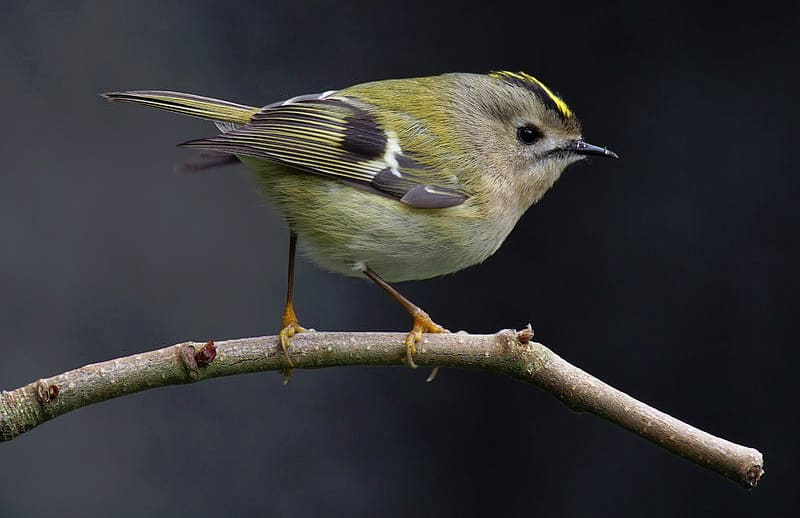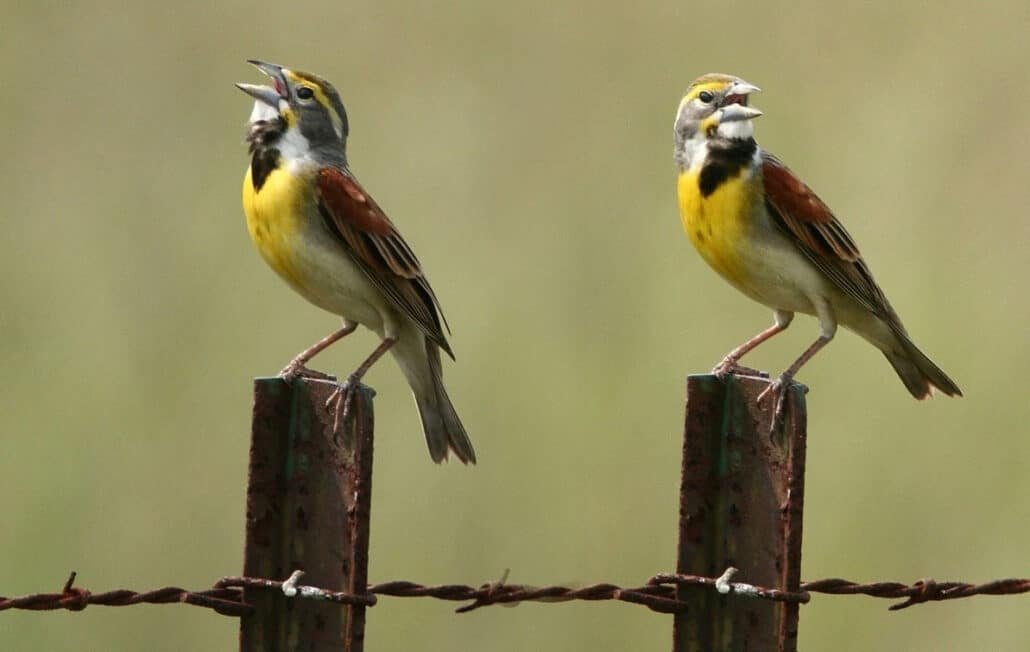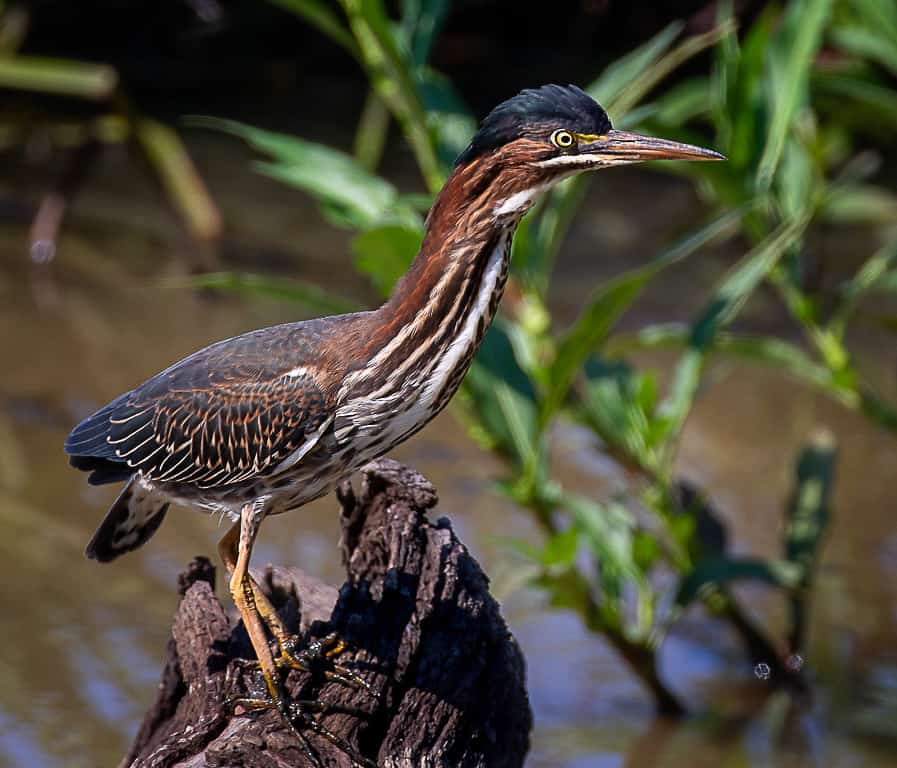Winter birds of Virginia (December, January, February)
The return of winter is most pronounced at the coast where huge rafts of ducks bob along the open Atlantic and protected waters of the Chesapeake Bay. Look for scaup, scoters, long-tailed duck, bufflehead, common goldeneye, ruddy duck, and red-breasted merganser. The three species of scoter (black, surf, and white-winged) are sometimes difficult to identify, as mixed flocks form long lines, stretching out of sight on the ocean waves. Both the common and king eider may be seen along the Chesapeake Bay Bridge Tunnel islands, as can the harlequin duck.
Along the mouth of the major rivers emptying into the bay expect to see canvasback and redhead. The dabbling ducks, such as mallard, gadwall, green-winged teal, wigeon, shoveler, and black duck, can be found on ponds or other shallow bodies of water. The waterfowl frequently move inland to reservoirs or lakes. Lake Moomaw in Bath County and Kerr Reservoir at the North Carolina border provide winter quarters for loons, grebes, and a variety of other species.
One of the exciting aspects of winter bird watching in Virginia is the possibility that a vagrant might appear at a feeder. One of the birds that has been showing up with increasing regularity is the rufous hummingbird. Usually spotted by someone who has been slow to take down the feeder, this species often appears after the more common ruby-throated hummingbirds have departed for their winter homes in the tropics. Initially it was thought that these birds had wandered from their normal migration path, but in recent years the theory has been advanced that they might represent a part of the population that winters in the East.
The rufous hummingbird is about the size of the ruby-throated, but the back has a more rusty tone and the flanks usually have a buffy wash of color. The birds are hardy and are capable of surviving extremely low temperatures. For someone playing host to one of these tiny winter visitors the only problem is devising a plan that will prevent the sugar solution in the feeder from freezing. Often the visiting hummingbird is an immature, and unless netted by a hummingbird bander, the identification can be narrowed down only as far as probable genus of the bird. Consequently many of the winter hummingbird records in Virginia are of Selasphorus species, but most of them are probably rufous. Anyone who spots a hummingbird after mid-November should contact the local bird club for verification of a winter vagrant record.
Each year as the weather turns cold and birds push to the south, everyone hopes that it will be an irruptive winter for finches. Some species, such as the evening grosbeak, pine siskin, common redpoll, and purple finch, tend to remain near their northern breeding grounds if it has been a productive seed year there. However, at other times these birds appear at feeders across Virginia and often remain here through early spring.
The most striking member of this group is the evening grosbeak. About the size of a cardinal, the males are unmistakable with golden-yellow bodies and bold black-and-white wings. The heavy conical shaped bill and flashy yellow brow patches make identification easy. The first indication that these birds may make a winter foray into the area often comes from the high-elevation counties in the western part of the state, where they are usually first spotted.
In addition to finches, other species that tend to be irruptive in terms of migration are the snowy owl and red-necked grebe. At feeders the red-breasted nuthatch may be a common visitor one winter and completely absent the next. Cedar waxwings, though not classified as irruptive, are erratic in their movements and their numbers at a particular site may fluctuate dramatically.
One of the common misconceptions about birdlife in Virginia is that robins leave the state in fall. Actually, this species is present year-round and higher numbers are reported in winter than in summer. The birds frequently congregate in huge roosts, the largest number reported as over one million robins in the Great Dismal Swamp during January 1970. In central Virginia more than 50,000 birds spent the winter of 1981 near the small town of Amherst. Generally speaking, the birds forage in moist woodlands feeding on berries and other fruits. During winter robins may not be easily visible hopping around lawns, but they are here.
Two major bird counts are held each winter, offering opportunities to those whose levels of bird expertise may vary. The Audubon Christmas Bird Counts initiated in 1900 by Frank Chapman as an alternative to the barbaric “side-hunt,” take place in more than 40 localities across the state. From mid-December through early January bird watchers head into the field and spend the day counting all of the species within a 15-mile-diameter circle. Contact the local bird club for information on nearby counts.
The Great Backyard Bird Count, sponsored jointly by the Cornell Laboratory of Ornithology and the National Audubon Society, is an Internet-based census that takes place in mid-February and requires less time on the part of the participants. In 2004 more than 1,700 reports were submitted from Virginia, including sightings of approximately 203,000 birds. Information about participation and directions can be obtained from the Great Backyard Bird Count website.
As the cold weather of late winter permeates Virginia, listen for the booming calls of the great horned owl. With a wingspan of nearly five feet and powerful talons, this bird really is the “tiger of the sky.” A bold and ferocious hunter, the great horned owl will attack skunks, rabbits, woodchucks, and has even been known to take full-grown cats. Opportunists, these large nocturnal raptors make a home wherever tall trees can be found and are as likely to occur in suburban neighborhoods as deep forests.
Perched on a loosely constructed pile of twigs and branches, often an abandoned nest of a squirrel or hawk, the incubating female endures the bleak conditions of midwinter. Sometimes with snow masking part of the feathers, the great horned owl hunkers down, low in the nest, protecting the eggs with the warmth of her body and keeping a covenant with the promise of new life. By the time the downy young appear, winter will have loosened its grip and spring, with its endless cycle of rebirth, will be stirring across the land.
So, looking back over the seasons, each with its own distinctive group of birds and special appeal, what is the best time to watch birds in Virginia? Is it the excitement of spring warbler migration, the pleasure of late-summer hummingbirds zipping by the feeders, the autumn majesty of a thousand hawks overhead, or a frozen winter marsh, alive with the sound of swans? The wonder of birds has no season, and beauty truly is “in the eye of the beholder,” Today, right this moment, is the best time to find the countless surprises that nature has in store.




